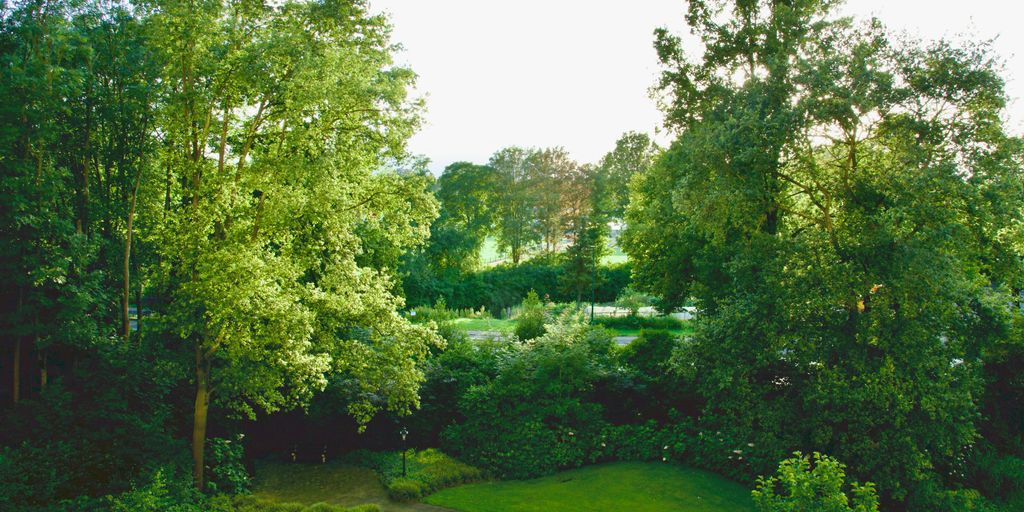Home & Family
Backyard Landscaping Ideas for Every Home

Transforming your backyard can be a fun and rewarding project. Whether you’re looking to create a tranquil retreat, a lively entertaining space, or a productive vegetable garden, there are plenty of ideas to inspire you. This article presents various landscaping concepts that cater to different styles and needs, helping you design the perfect outdoor area for your home.
Key Takeaways
- A fire pit area adds warmth and a gathering spot for family and friends.
- Sustainable vegetable gardens can provide fresh produce and enhance your outdoor space.
- Water features can create a calming atmosphere and attract wildlife.
- Vertical gardens are a great way to use limited space effectively.
- Designing a child-friendly play area ensures safety while promoting outdoor fun.
Creating a Cosy Fire Pit Area
Creating a fire pit area in your backyard can transform it into a warm and inviting space for gatherings. A fire pit not only provides warmth but also serves as a focal point for socialising. Here are some key aspects to consider:
Choosing the Right Location
- Safety First: Ensure the fire pit is at least 10 feet away from any structures or overhanging branches.
- Accessibility: Choose a spot that is easy to reach from your home and other outdoor areas.
- Wind Direction: Consider the prevailing wind direction to avoid smoke blowing into your seating area.
Selecting Comfortable Seating
- Variety of Options: Use a mix of seating like benches, chairs, and cushions to create a relaxed atmosphere.
- Durable Materials: Opt for weather-resistant furniture to withstand the elements.
- Arrangement: Position seating in a circular layout around the fire pit to encourage conversation.
Enhancing with Outdoor Lighting
- String Lights: Hang string lights above the seating area for a magical touch.
- Lanterns: Use lanterns on tables or around the fire pit for additional lighting.
- Pathway Lights: Install lights along pathways to guide guests safely to the fire pit.
A well-designed fire pit area can become the heart of your backyard, perfect for gatherings and relaxation.
When considering a fire pit, remember that this article compares fireplaces and fire pits, highlighting their key differences in cost, construction, and suitability for various outdoor spaces. Fireplaces are generally more expensive and require professional installation, while fire pits are more budget-friendly and versatile. The choice depends on personal preferences, climate, and intended use. Both options can enhance outdoor ambiance, but safety precautions and professional advice are recommended for installation.
Designing a Sustainable Vegetable Garden
Imagine stepping into your backyard and picking fresh vegetables for your meals! By creating a vegetable garden, you can enjoy the fruits of your labour while also helping the environment. This guide will help you design a garden that is both productive and eco-friendly.
Testing and Improving Soil
Before planting, it’s essential to check your soil conditions. Here’s how to get started:
- Conduct a soil test to determine the pH level and nutrient content.
- Amend the soil as needed to enhance its quality for growing vegetables.
- Consider adding organic matter like compost to improve soil structure and fertility.
Building Raised Garden Beds
Using raised garden beds can be beneficial for several reasons:
- Improved drainage helps prevent waterlogging.
- Easier access for planting and harvesting.
- Pest control as it’s harder for pests to reach your plants.
Choosing the Right Vegetables
Select vegetables that thrive in your climate and soil conditions. Here’s a simple table to help you choose:
| Vegetable | Sunlight Needs | Best Planting Time |
|---|---|---|
| Tomatoes | Full sun | Late spring |
| Carrots | Full sun | Early spring |
| Spinach | Partial shade | Early spring |
Remember, growing your own vegetables not only provides fresh produce but also contributes to a healthier planet.
Installing a Serene Water Feature
Selecting the Type of Water Feature
When it comes to adding a water feature to your garden, the options are plentiful. Here are some popular choices:
- Fountains: Great for small spaces, they provide soothing sounds.
- Ponds: Perfect for wildlife, they can be a larger focal point.
- Waterfalls: These can create a dramatic effect and are ideal for larger gardens.
Placement and Installation Tips
Choosing the right spot for your water feature is crucial. Consider the following:
- Sunlight: Ensure it gets a mix of sun and shade to keep the water healthy.
- Accessibility: Make sure it’s easy to reach for maintenance.
- Surroundings: Add plants and stones around it to enhance its beauty.
Maintaining Your Water Feature
To keep your water feature looking its best, regular maintenance is key. Here are some tips:
- Clean the area: Remove debris and algae regularly.
- Check water levels: Ensure the water is at the right level, especially in hot weather.
- Inspect pumps: Make sure they are functioning properly to avoid any issues.
A water feature can transform your garden into a peaceful oasis, making it a perfect spot for relaxation and enjoyment.
By carefully selecting and maintaining your water feature, you can create a serene environment that enhances your backyard experience. Consider the space you have and choose a feature that complements your garden’s design.
Incorporating Vertical Gardens

Vertical gardens are a fantastic way to add greenery to your space, especially if you have limited ground area. They can transform bare walls into lush landscapes. Here are some ideas to get you started:
Choosing Plants for Vertical Gardens
- Select plants that thrive in vertical spaces such as:
- Climbing plants like ivy or clematis
- Succulents for a modern look
- Herbs like basil and mint for a functional garden
DIY Vertical Garden Projects
- Wall-mounted planters: Use wooden pallets or old crates to create a rustic look.
- Hanging pots: Suspend pots from hooks or a trellis for a dynamic display.
- Faux plant walls: If maintenance is a concern, consider using faux plants for a low-effort solution.
Maintaining Vertical Gardens
- Water regularly: Ensure your plants receive enough moisture, especially in warmer months.
- Prune as needed: Keep plants tidy and encourage growth by trimming back overgrown areas.
- Check for pests: Regularly inspect your vertical garden for any signs of pests or disease.
Vertical gardens not only beautify your space but also improve air quality and provide a habitat for wildlife.
By incorporating vertical gardens, you can create a vibrant and inviting atmosphere in your backyard, making it a perfect spot for relaxation or entertaining guests. Consider your space and choose plants that will thrive in your environment.
Building an Outdoor Living Room
Creating an outdoor living room can transform your backyard into a welcoming space for relaxation and entertainment. Plan for plenty of seating to ensure everyone feels comfortable. Here are some key elements to consider:
Selecting Outdoor Furniture
- Choose durable materials: Look for weather-resistant options like metal, wood, or synthetic wicker.
- Mix and match styles: Combine different types of seating, such as sectionals, chairs, and benches, to create a unique look.
- Add cushions: Use colourful cushions to enhance comfort and style.
Creating Zones for Different Activities
- Define areas: Use rugs or different flooring materials to separate spaces for dining, lounging, and cooking.
- Incorporate a fire pit: A fire pit can serve as a focal point and provide warmth during cooler evenings.
- Add a dining table: Ensure there’s a designated area for meals and gatherings.
Weatherproofing Your Outdoor Space
- Use waterproof furniture: Invest in furniture that can withstand rain and sun.
- Consider a canopy or pergola: These structures can provide shade and shelter, making your space usable in various weather conditions.
- Store cushions indoors: Keep cushions dry and protected when not in use to prolong their life.
An outdoor living room is not just about aesthetics; it’s about creating a space where you can enjoy time with family and friends.
By thoughtfully selecting furniture and creating distinct areas, you can make your backyard a true extension of your home, perfect for entertaining or simply unwinding after a long day. Remember to incorporate elements like lighting and greenery to enhance the atmosphere, making it a personalised space for relaxation and fun.
Designing a Child-Friendly Play Area
Creating a safe and fun play area in your backyard is essential for children to enjoy the outdoors. A well-designed play space can spark creativity and encourage physical activity. Here are some key points to consider:
Choosing Safe Play Equipment
- Opt for equipment made from natural materials, such as wood, to ensure safety and durability.
- Ensure that all play equipment meets safety standards and is age-appropriate.
- Include a variety of options, such as swings, slides, and climbing structures, to cater to different interests.
Incorporating Natural Elements
- Use natural features like trees and bushes to create a shaded area for kids to play.
- Consider adding a sandbox filled with smooth pebbles or a grassy hill for rolling down.
- Plant flowers and shrubs around the play area to make it visually appealing and inviting.
Maintaining the Play Area
- Regularly check the equipment for wear and tear to ensure safety.
- Keep the area clean and free from debris to prevent accidents.
- Refresh the landscaping and plants to maintain a vibrant and engaging environment.
A child-friendly play area not only provides fun but also encourages children to connect with nature and explore their surroundings.
By following these guidelines, you can create a play area that is both enjoyable and safe for children, allowing them to make the most of their outdoor experiences. Remember, the right design can transform your backyard into a magical space for kids to thrive!
Creating a Relaxing Garden Retreat

Transforming your backyard into a peaceful oasis can be a rewarding project. Here are some ideas to help you create a relaxing garden retreat.
Selecting Calming Plants
- Choose plants that promote relaxation, such as:
- Lavender
- Chamomile
- Ferns
- Consider using native plants that require less maintenance and attract local wildlife.
Incorporating Water Elements
- Adding a water feature can enhance the tranquillity of your garden. Options include:
- Small fountains
- Ponds with fish
- Bubbling brooks
- The sound of flowing water can create a soothing atmosphere, making your garden feel like a retreat.
Adding Comfortable Seating
- Create inviting seating areas with:
- Hammocks for lounging
- Benches surrounded by flowers
- Daybeds near water features
- Ensure your seating is made from weatherproof materials to withstand the elements.
A well-designed garden retreat can be a perfect escape from the hustle and bustle of daily life.
By thoughtfully selecting plants, incorporating water features, and providing comfortable seating, you can create a serene space that invites relaxation and enjoyment.
Enhancing Privacy in Your Backyard
Creating a private space in your backyard can significantly improve your outdoor experience. Using plants, fences, and screens can help you achieve a secluded area where you can relax and enjoy your time outside.
Using Plants for Privacy
- Planting hedges along your property lines can block unwanted views. Choose evergreen shrubs for year-round coverage or deciduous plants for seasonal beauty.
- Consider using tall grasses or flowering plants to create a natural barrier. These can also help absorb noise, making your space feel more tranquil.
- Climbing plants like ivy or roses can be trained to grow on fences, adding greenery and charm.
Building Fences and Screens
- Installing a fence is a straightforward way to enhance privacy. Wooden fences offer a classic look, while metal or composite options provide durability.
- Ensure your fence complements your landscape design. You can also add climbing plants to soften the appearance of the fence.
- Privacy screens can be placed strategically to block views from neighbours or busy streets, creating a more intimate setting.
Incorporating Pergolas and Gazebos
- A pergola can provide partial shade and privacy. You can train climbing plants to grow over it, creating a beautiful green canopy.
- Gazebos offer a more enclosed space for relaxation and can be decorated with curtains for added privacy.
- Consider the placement of these structures to maximise their effectiveness in blocking views.
Creating a private backyard space not only enhances your enjoyment but also adds value to your home. By using a combination of plants, fences, and structures, you can design a sanctuary that feels uniquely yours.
By implementing these ideas, you can transform your backyard into a private retreat, perfect for unwinding or entertaining friends.
Designing a Backyard for Entertaining
Creating a backyard that’s perfect for entertaining can transform your outdoor space into a lively gathering spot. Plan for plenty of seating to ensure everyone feels comfortable and included. Here are some key elements to consider:
Creating an Outdoor Dining Area
- Choose a sturdy table that can accommodate your guests.
- Use weather-resistant materials for durability.
- Consider adding an umbrella or pergola for shade.
Incorporating a Barbecue or Outdoor Kitchen
- A grill is essential for summer cookouts.
- Include a counter for food preparation.
- Storage space for utensils and supplies is a must.
Adding Ambiance with Lighting
- String lights can create a warm, inviting atmosphere.
- Use lanterns or candles for a cosy feel.
- Consider solar lights along pathways for safety and charm.
A well-designed backyard not only enhances your home’s appeal but also increases its value, making it a smart investment for any homeowner.
By focusing on these elements, you can create a backyard that’s not just functional but also a beautiful space for entertaining friends and family.
Implementing Eco-Friendly Landscaping
Creating an eco-friendly backyard is not only beneficial for the environment but also enhances the beauty of your home. Here are some effective ways to make your landscaping more sustainable:
Choosing Native Plants
- Native plants are adapted to your local climate and soil, requiring less water and maintenance.
- They provide habitat for local wildlife, including birds and beneficial insects.
- Consider plants like coneflowers, salvia, and lavender for a vibrant garden.
Using Organic Mulch
- Organic mulch helps retain moisture in the soil, reducing the need for frequent watering.
- It suppresses weeds, which means less time spent on maintenance.
- Try using materials like wood chips or straw for a natural look.
Installing Rainwater Harvesting Systems
- Collecting rainwater can significantly reduce your water bill and conserve resources.
- Use barrels to gather rainwater from your roof, which can then be used for watering plants.
- This method is not only eco-friendly but also promotes a sustainable garden.
By implementing these eco-friendly practises, you can create a beautiful and sustainable backyard that benefits both you and the environment.
Summary Table of Eco-Friendly Practises
| Practise | Benefits |
|---|---|
| Native Plants | Low maintenance, supports local wildlife |
| Organic Mulch | Moisture retention, weed suppression |
| Rainwater Harvesting | Water conservation, reduced bills |
Creating Seasonal Interest in Your Garden
Keeping your garden lively throughout the year is essential for enjoying your outdoor space. Each season offers unique opportunities to enhance your garden’s beauty. Here are some tips to help you maintain seasonal interest:
Selecting Plants for Year-Round Interest
- Choose a mix of perennials and annuals that bloom at different times.
- Incorporate evergreen plants for winter colour.
- Consider plants with interesting textures or bark for winter appeal.
Incorporating Seasonal Decorations
- Spring: Add colourful pots and garden ornaments.
- Summer: Use vibrant cushions and outdoor rugs.
- Autumn: Decorate with pumpkins and hay bales.
- Winter: Hang lights and use natural elements like pinecones.
Maintaining Your Garden Throughout the Year
- Regularly check for weeds and pests.
- Adjust watering schedules based on the season.
- Mulch your garden beds to retain moisture and suppress weeds.
A well-maintained garden can be a source of joy and relaxation, providing a beautiful backdrop for family gatherings and personal reflexion.
By following these tips, you can ensure that your garden remains a vibrant and inviting space, no matter the season. Don’t forget to add seasonal highlights to keep things fresh and exciting!
Building Functional Pathways and Walkways
Creating pathways in your backyard not only enhances its beauty but also provides clear navigation through your garden. Here are some key aspects to consider:
Choosing Materials for Pathways
- Stone: Durable and natural-looking, perfect for rustic designs.
- Brick: Offers a classic look and can be arranged in various patterns.
- Gravel: Cost-effective and easy to install, but may require regular maintenance.
Designing Pathway Layouts
- Straight Paths: Ideal for guiding visitors directly to a focal point, like a seating area.
- Curved Paths: Create a more relaxed feel, allowing for exploration of different garden sections.
- Winding Paths: Perfect for larger gardens, leading through various plants and features.
Maintaining Your Walkways
- Regularly check for weeds and remove them to keep pathways clear.
- Ensure that materials are stable and replace any damaged sections.
- Consider seasonal adjustments, like adding ground cover plants for a softer look.
A well-designed pathway can transform your garden into a welcoming space, encouraging exploration and enjoyment.
By thoughtfully planning your pathways, you can create a functional and attractive landscape that enhances your outdoor experience. Lining pathways with colourful plants can also add vibrancy and charm to your garden.
Final Thoughts on Backyard Landscaping
In conclusion, transforming your backyard into a beautiful and functional space is an exciting journey. With a variety of ideas at your fingertips, you can create a garden that reflects your personality and meets your needs. Whether you choose to add a fire pit for cosy evenings, plant a vegetable garden for fresh produce, or install a calming water feature, each choice contributes to a unique outdoor experience. Remember, the key is to plan well and enjoy the process. Your backyard can become a delightful retreat for relaxation, gatherings, and fun activities, making it a cherished part of your home.
Frequently Asked Questions
What are some easy-care plants for my backyard?
If you want plants that don’t need much attention, try perennials like coneflowers or salvia. Ground cover plants like creeping thyme or sedum are also good choices. Drought-resistant plants, such as Russian sage and lavender, can help create a beautiful garden with less work.
How can I make the most of a small backyard?
To maximise a small backyard, think about space-saving ideas. You can use vertical gardens with trellises and hanging pots. Practical furniture, like storage benches or tables with built-in seating, can also help.
What are some eco-friendly landscaping ideas?
You can make your backyard more beautiful and kind to the earth by using eco-friendly practises. Choose plants that are native to your area, use organic mulch to support your plants, and collect rainwater with barrels.
How often should I refresh my landscaping?
To keep your yard looking lively, adjust it with the seasons. Regular maintenance is key. Change the mulch every year and trim the plants as the seasons change. Check your landscape design now and then for any updates needed.
What are some budget-friendly ways to improve my backyard?
You can fill bare spots with perennial ground covers instead of mulch. Look for young plants instead of older ones, and check out garage sales or flea markets for furniture you can fix up.
How can I make my backyard look nice without spending a lot?
Planning is important for a great backyard. Focus on site preparation to avoid water pooling, plan your hardscaping carefully, and layer your plants for a beautiful look.
What type of DIY patio is easiest to build?
Some easy DIY patios to create include gravel, pavers, and concrete. These options are simple to install and can fit various styles.
How can I create a relaxing space in my backyard?
To make a relaxing area, consider adding a fire pit for warmth, comfortable seating for lounging, and calming plants. You can also include water features for a peaceful atmosphere.
-

 Press Release5 days ago
Press Release5 days agoClinical Trials Market Set for Robust Growth, Driven by Drug Development Surge and Digital Innovation
-

 Press Release6 days ago
Press Release6 days agoIndustrial Boiler Market Expected to Surpass USD 24.4 Billion by 2035 Amid Growing Demand for Energy Efficiency and Industrialization
-

 Business7 days ago
Business7 days agoHow Managed IT Solutions Help Small Teams Compete at Enterprise Scale
-

 Press Release6 days ago
Press Release6 days agoGreen Bio Chemicals Market Poised for Sustainable Growth amidst Global Shift to Eco-Friendly Alternatives by 2035
-

 Press Release6 days ago
Press Release6 days agoFill-Finish Pharmaceutical Contract Manufacturing Market Expected to Flourish Amid Biopharmaceutical Boom and Global Outsourcing Trend by 2035
-

 Press Release6 days ago
Press Release6 days agoPreventive Vaccines Market to Witness Strong Growth by 2035
-

 Press Release6 days ago
Press Release6 days agoPet Food Nutraceutical Market Set for Robust Expansion Amid Rising Demand for Pet Wellness by 2035
-

 Press Release5 days ago
Press Release5 days agoWaterproof Structural Adhesives Market: A Comprehensive Study Towards USD 10.3 Billion in 2035










